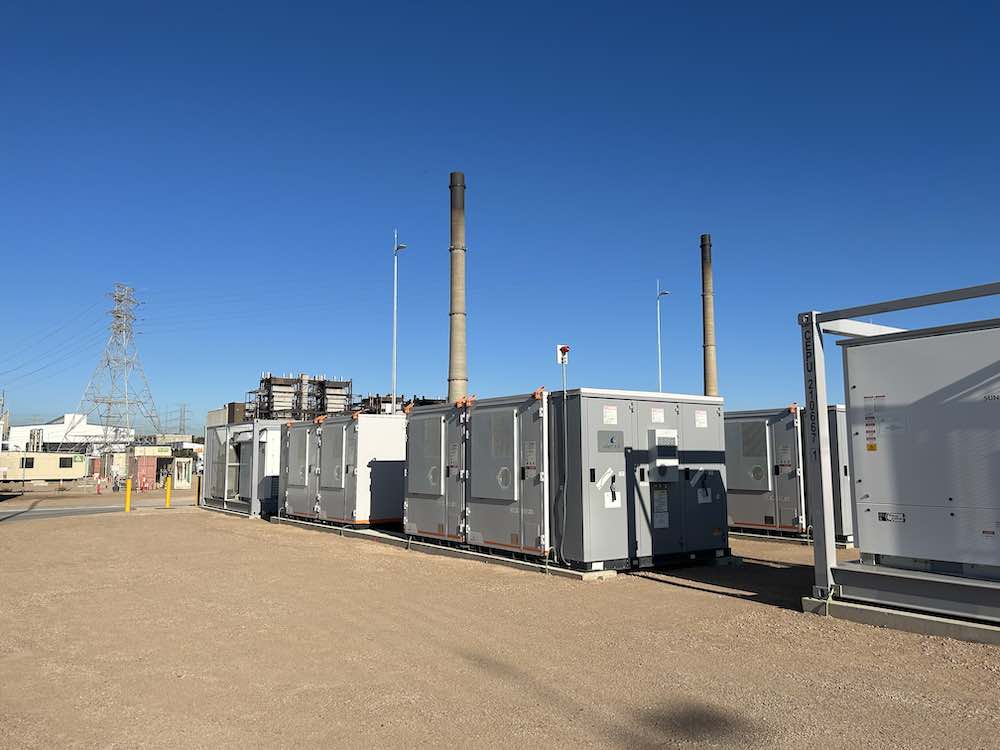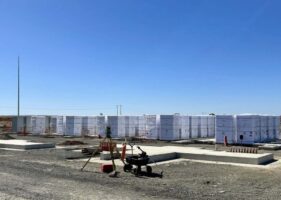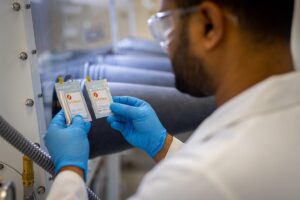At AGL Energy’s Torrens Island Power Station, just half an hour out of the Adelaide CBD, there’s a sort of suspended walkway joining the 480MW A power station, completed in 1967, with the 800MW B station, completed in 1982.
Both are gas power generators – although Torrens A was initially oil-fired back in the 1960s – and the 15-year age difference between the two plants is starkly evident, particularly now that Torrens A is fully decommissioned.
In fact, so dramatic was the evolution in gas power generation technology over those 15 years that the walkway between the two facilities – pictured below – has become affectionately known at Torrens Island as the Time Tunnel.
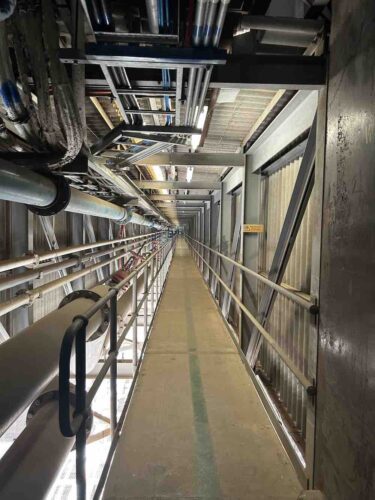
The nickname has proved prophetic. In 2023, the whole of the Torrens Island facility has become a Time Tunnel of sorts: a museum of power generation past, present and future.
In the past sits the mothballed Torrens A, with its incredibly impressive post-war technology, including a piece of kit called the “governor,” which AGL’s Kevin Taylor – who first worked at Torrens in 1986 – tells us was used to keep the machines running at 3000 rpm; the original version of inertia.
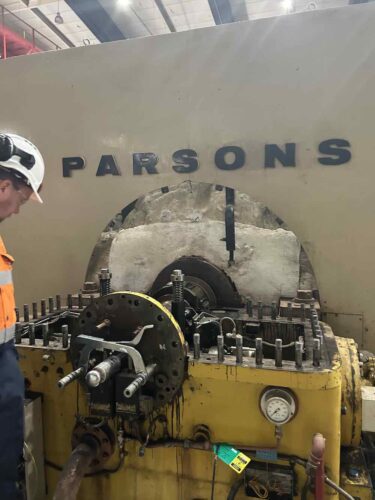
In the present, although only just, sits Torrens B, which is due to close all four of its 200MW units by June 30, 2026, when the facility turns 50 years old.
That plant, which had previously been scheduled to close around 2035, is based on steam turbine technology that, while cutting edge at the time, has more recently been compared to a giant kettle – pretty useless to a renewables dominated grid like South Australia where flexibility is king.

More firmly in the present is the 210MW Barker Inlet Power Station, or BIPS, which AGL commissioned in 2017, adjacent to Torrens B, using 12 reciprocating engines that are able to go from a cold start to full load in five minutes. A big jump from the 16 hours it takes Torrens B.
This shiny new machine is described by AGL as a “fit for purpose,” fast gas and diesel, peaker plant that can jump in and out of the market to address an imbalance between supply and demand. It’s also much less emissions intensive than its 1980s predecessor.

AGL’s Taylor says the benefits of plants like BIPS is they can come in and run for as long as they have fuel. But mostly, they’re in and out of the market, often for only one-and-a-half hours at a time to fill in the gaps when renewables cannot meet demand.
Which brings us to the Torrens Island battery – the 250MW/250MWh battery AGL has installed with Finish group Wärtsilä, and using SMA technology, on the site that used to be occupied by fuel tanks that once stored the oil for Torrens A.
The battery occupies both the present and the future in the Torrens Time Tunnel – it’s currently on target to come fully online in the second half of this year, when it will be used to perform a similar role to BIPS in providing firming for renewables, as well as other market services.
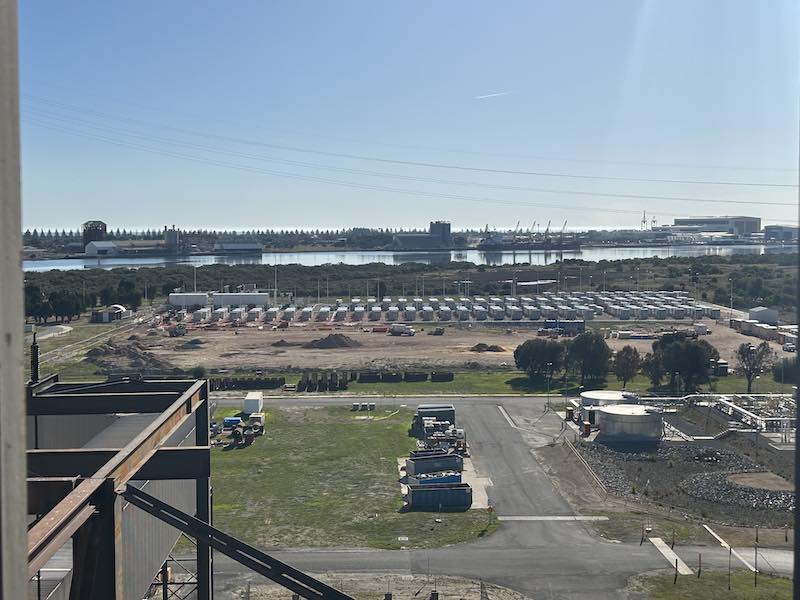
“I think most probably we are cannibalising our own business,” says AGL COO Markus Brokhof. “But, you know, if we don’t cannibalise it then somebody else will … because at the end of the day… batteries are also in competition with gas plants.”
For now, the battery won’t eat too much of BIPS’ lunch, being only a one-hour facility, and will mainly be used for some arbitrage opportunities – charging during times of peak renewables and then discharging in the evening demand peaks; as well as providing market services for AEMO and participating in the capacity market for FCAS products.
But a future part of the equation is the battery’s potential to scale up to 1000MWh or four hours of energy storage capacity, when its role could grow to encompass longer duration energy storage and arbitrage or other as-yet unexplored market services.
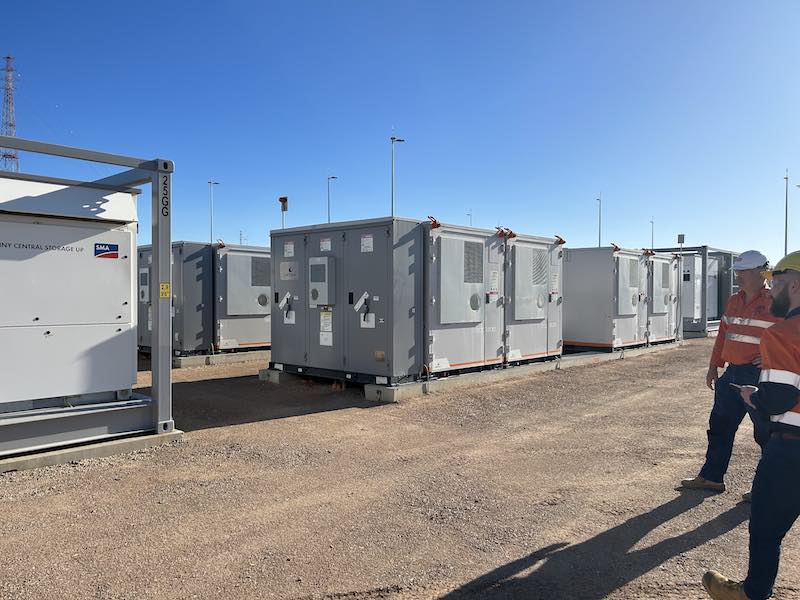
The main missing piece for the renewable future, as Brokhof says, is to find ways to store – or shift, or use – the huge amount of surplus renewables washing around the South Australia grid during the middle of the day, that regularly sends wholesale energy prices for the state into negative territory.
“When energy prices are negative… you should use that energy in the market and make a profitable business case out of it,” says Brokhof.
AGL is exploring a number of ways it might do this at Torrens, including through the potential construction of a hydrogen electrolyser on the Island, as well as feasibility study backed by ARENA into the possibilities of using thermal storage technology.
Another future-focused technology being used by AGL on the island is carbon capture and re-use, in partnership with French-based industrial gases company, Air Liquide.

Air Liquide takes off a portion of AGL’s flue gas and extracts “a very clean” CO2 from that and uses that for medical, industrial or food purposes, including wine bottling, waste water treatment instead of using acids, and in public swimming pools.
“I think it’s very important for us to have an ongoing discussion with these industrial partners,” Brokhof says. “Our concept of circular economy should be one of the main ingredients at all sites, but also at Torrens.”
Disclosure: AGL Energy contributed to the cost for RenewEconomy to travel to and from Torrens Island

